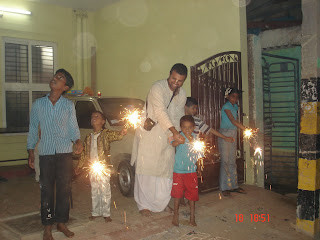


Hundreds and thousands of children are toiling as bonded labor in India’s silk industry and the government is not able to do anything to protect their rights. Those children who are working in India’s silk industry are virtually slaves.
Human rights organizations are calling on India to free these children from bonded labor and rehabilitate them. The children are bound to work for their employers in exchange of the loan taken by their parents or families, and are unable to leave because of the debt. They are also paid very paltry sum for their labour. Most of these children are Dalits. Dalits are called untouchables and belong to the lowest level in the hierarchy of the Indian caste system.
Contrary to the Indian governments claim bonded children are very conspicuous In India everywhere. Uttar Pradesh, Karnataka and Tamil Nadu form the core of India’s silk and sari industry. Bonded children as young as five work for more them twelve hours a day in the silk industry, at different levels of production. They toil for nearly seven days a week, breathing smoky fumes from the silk making machinery. These children squat near cramped looms to help and assist workers in dim and damp rooms. They are required to dip their little hands in boiling hot water that causes blisters and handle dead worms which breed infections. Twisting thread which injure their fingers is also a part of the silk making process. Their attempts to attend school are met with protest and physical violence by their employers. Their adulthood is impoverished, illiterate and damaged by the weight of their childhood.
Contrary to the Indian governments claim bonded children are very conspicuous In India everywhere. Uttar Pradesh, Karnataka and Tamil Nadu form the core of India’s silk and sari industry. Bonded children as young as five work for more them twelve hours a day in the silk industry, at different levels of production. They toil for nearly seven days a week, breathing smoky fumes from the silk making machinery. These children squat near cramped looms to help and assist workers in dim and damp rooms. They are required to dip their little hands in boiling hot water that causes blisters and handle dead worms which breed infections. Twisting thread which injure their fingers is also a part of the silk making process. Their attempts to attend school are met with protest and physical violence by their employers. Their adulthood is impoverished, illiterate and damaged by the weight of their childhood.
The southern state of Karnataka is a major silk producing state in India. It is the major producer of Indian silk thread. The production depends completely on the labor of bonded children under the age of fourteen. Most of the bonded children are either Muslims or Dalits. Children as young as nine years are tied and beaten with belts if they don’t do they work properly by the supervisors and owners in these industries.
Bonded children are less common in the carpet Industry in Uttar Pradesh compared to the silk industry. Child labor laws have been better imposed in the carpet industry due to strong pressure from domestic and international activists







